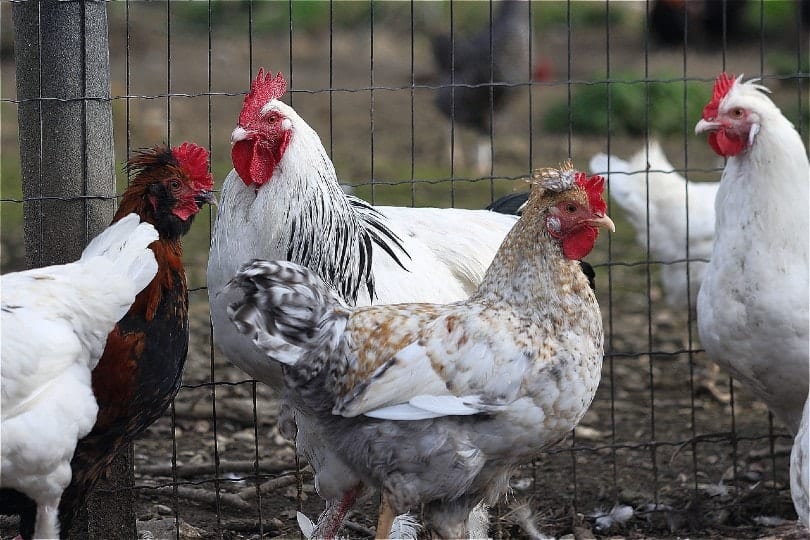Approved by Dr. Luqman Javed
If you’re a first-time flock owner, it can be a little nerve wracking trying to learn all you can about chickens. After all, you want to make sure you’re caring for them properly so you can raise a successful flock of birds that stay healthy and produce quality eggs.
So, how fast do chickens grow? The most important factor to determine growth rate is a chicken’s breed; however, breed doesn’t seem to impact age at which maturity is attained. Let’s explore chicken growth rates in greater detail.

Faster vs. Slower Growing Chickens: What Does That Mean?
Some chicken species grow more rapidly than others based on the genetics of the breed. For instance, many meat chickens grow quickly, while egg layers might be slower to develop. However, in terms of growth, the age at which a chicken reaches maturity is roughly the same among all breeds, a period of anywhere from 16 to 24 weeks (4 to 6 months). However, the size at which they attain maturity varies. Therefore, having a larger breed doesn’t mean they will mature quicker.
Faster Growing Chickens
The fastest-growing breeds are broiler chickens, also known as meat chickens. These birds have been selectively bred for rapid growth and have the ability to reach a slaughter size by the time they are around 30 to 60 days old. They are usually slaughtered in accordance with legislation, as many jurisdictions have established standard age limits for these birds.
However, the chickens that are raised this way are still processed well before they reach their true maximum size because, despite their rapid growth, they aren’t adults when they are slaughtered. Their physiology and mannerisms are those of a juvenile, not an adult. If left to mature indo adults, they can attain weights of around 9 to 10 pounds on average (approximately 4.8 kilograms).
Slower Growing Chickens
Almost all non-broiler breeds are considered slow-growing because they don’t pack on weight as quickly. However, their physiological maturity age is roughly the same as those of broilers. They would just be much smaller in terms of weight at the age. Like broilers, these breeds generally reach maturity at between 16 and 24 weeks of age.

Taking Care of Baby Chicks
When baby chicks are tiny, they rely on an outside heat source to keep their body temperature up. Your chicks will need a heating lamp for the first 4 to 6 weeks of their life. Once they get their adult feathers, they can start retaining heat on their own.
When to Introduce Chickens to the Outdoors
Depending on weather conditions where you live, baby chicks can enter the great outdoors by 4 to 6 weeks with most breeds. However, it shouldn’t be rushed if it’s too cold outside (such as in winter).
When Egg Laying Begins
On average, hens start to lay around 18 weeks of age. The trigger to lay eggs requires more than a prerequisite age, as chickens need exposure to enough sunlight to trigger their reproductive cycle. Therefore, chickens that mature during the winter months might not lay eggs until spring arrives.

Time to Maturity of Specific Breeds
There is a vast selection of chicken breeds out there. However, we rounded up a few common names you should recognize to explain the differences between how these breeds mature.
- Cornish — 16-20 weeks
- Orpington — 19-24 weeks
- Brahma — 18-24 months
- Golden Comet — 16-20 weeks
- Plymouth Rock — 18-20 weeks
- Marans — 22-26 weeks
- Silkie — 22-24 weeks
- Leghorn — 18-20 weeks

Conclusion
Even though hens continue to grow after sexual maturity, the bulk of their development is done by the time they start laying eggs. If you have broiler chickens, they usually mature even quicker, producing quality meats in a short window of time.
Even after hens start laying, they will continue to grow and fill out over their first year. By the time your chickens are 2 years old, all—despite breed—will be fully mature.
- You may also want to read: What Are Broiler Chickens & How Long Do They Live?
Featured Image Credit: WFranz, Pixabay
